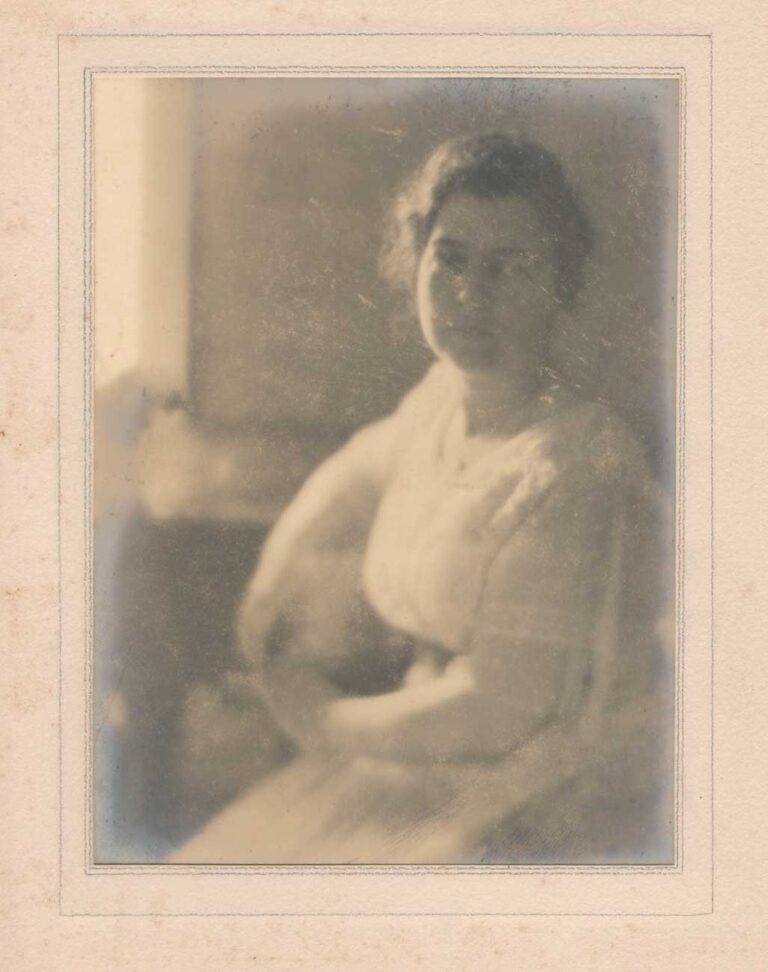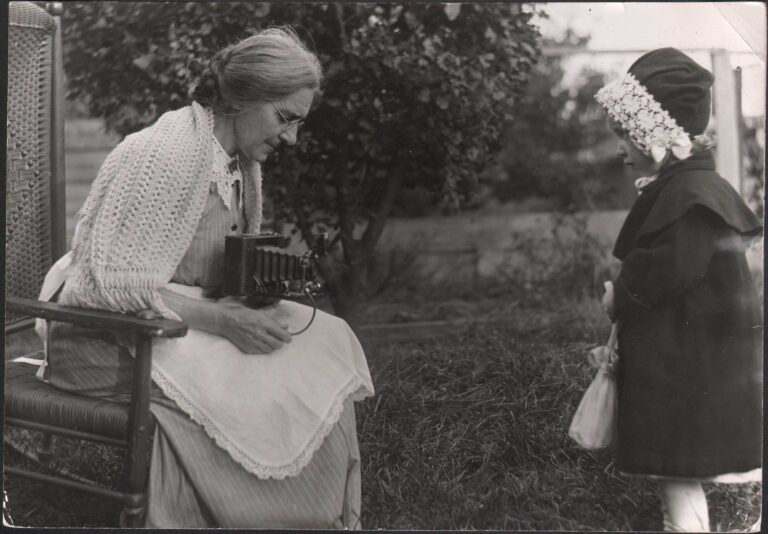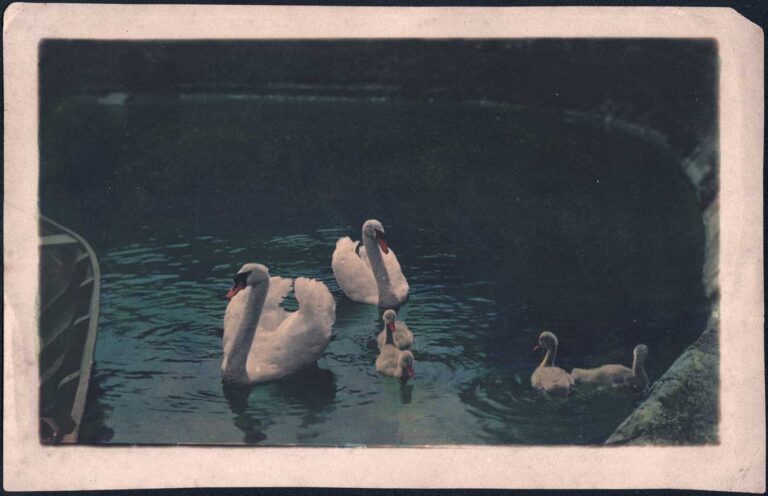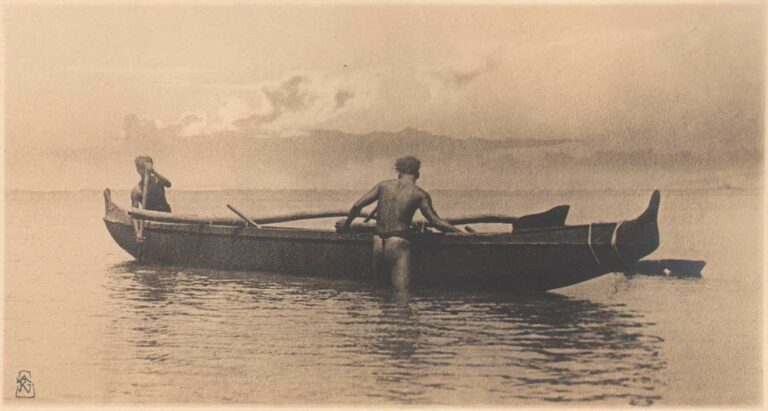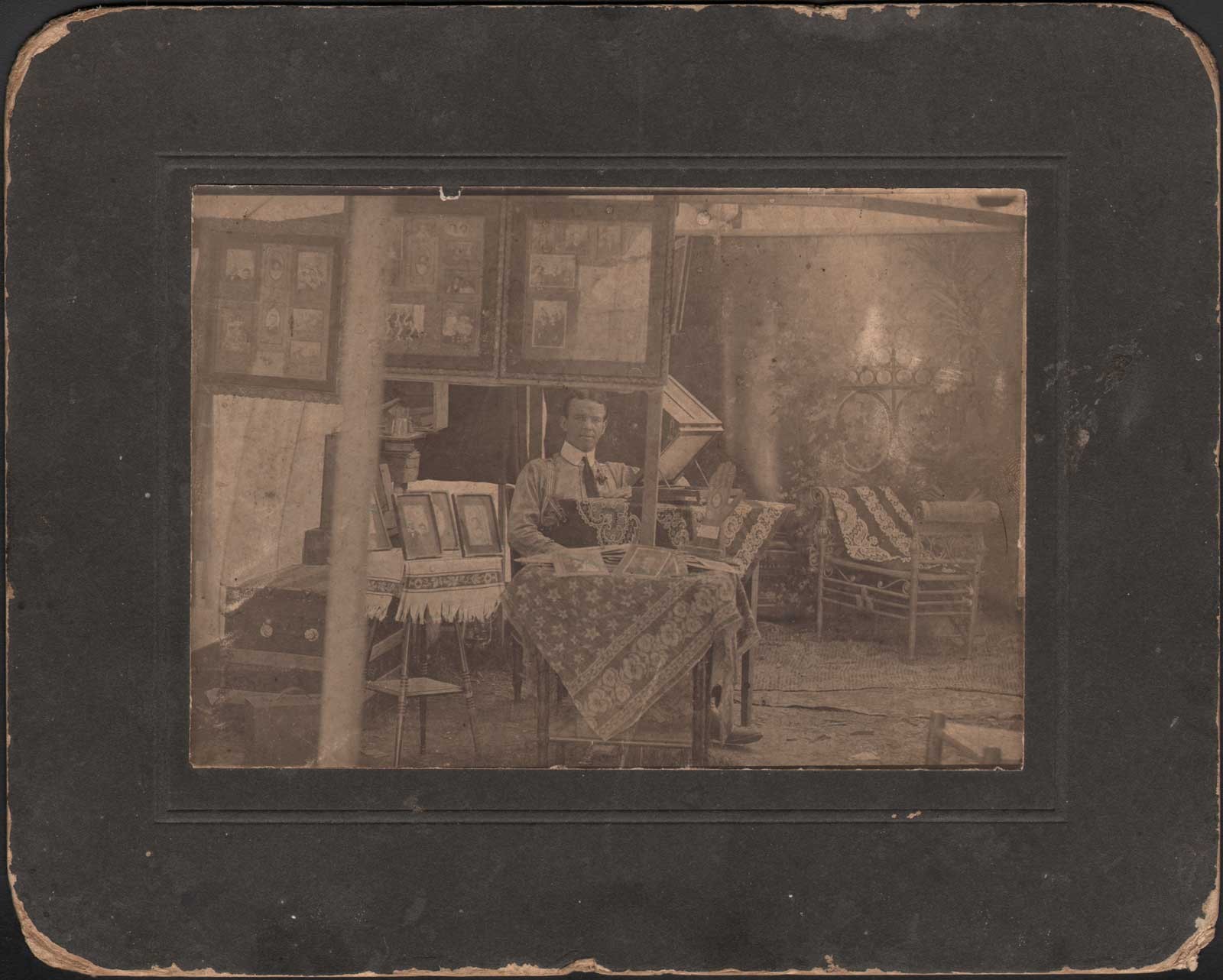
Retouching Desk Operator in Photographic Studio
Wearing suspenders, a tie and high-collared dress shirt, a nattily dressed gentleman at center sits before a wooden retouching desk placed on a lace-covered work table within a photographic studio. Possibly the photographer himself of this establishment, he’s shown framed and peering through a series of mounted photographs. They are seen on a table at below left in addition to three larger collages arranged within hanging frames at the upper left-the completed satisfactory evidence of his handiwork for potentional customers. A painted studio backdrop can be seen at far right in the background, with a posing bench placed in front of it.
In order to satisfy customer demands and vanities, finished printed photographs produced from glass negatives placed on an adjustable wood easel set within a retouching desk was a common practice by commercial photographic studios in the late 19th and early 20th centuries. The alteration of these negatives was achieved using a retouching medium made from powdered resin mixed with turpentine and a special incising knife to alter the emulsion on the plates. The process employed a skilled hand in order to achieve a certain effect, such as the elimination of wrinkles, freckles or excess skin found objectionable by the sitter. This mounted card photograph of an American photographic studio was acquired in 2017 from a re-seller based in New Braunfels, Texas, and is believed to have been taken ca. 1910-20.
With the plate secured on a translucent glass easel in front of him, the photographer or retoucher would often place the desk facing a north-facing window for consistent light or use a paraffin lamp, electric light or incandescent gaslight behind it. The practice, taken up a full century before photographers used the computer software application PhotoShop to digitally re-manipulate photographic content, is documented in several books, including one from 1898 published in London: The Art of Retouching Negatives and Finishing & Coloring Photographs. Examples of two retouching desk models can be seen in the advertisements section on page 176. In 1905, a female operator is shown working before a desk as part of an article on retouching beginning on page 179 in The Book of Photography.
